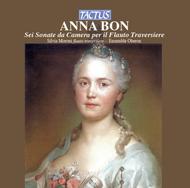
Anna Bon - Six chamber sonatas for transverse flute
£14.20
Usually available for despatch within 2-3 working days
Despatch Information
This despatch estimate is based on information from both our own stock and the UK supplier's stock.
If ordering multiple items, we will aim to send everything together so the longest despatch estimate will apply to the complete order.
If you would rather receive certain items more quickly, please place them on a separate order.
If any unexpected delays occur, we will keep you informed of progress via email and not allow other items on the order to be held up.
If you would prefer to receive everything together regardless of any delay, please let us know via email.
Pre-orders will be despatched as close as possible to the release date.
Label: Tactus
Cat No: TC745201
Format: CD
Number of Discs: 1
Genre: Chamber
Release Date: 7th September 2009
Contents
Artists
Silvia Moroni (transverse flute)Ensemble Oberon
About
The sonatas by Anna Bon are conceived in three movements, and (with only two exceptions), are arranged in an order of increasingly quick tempos. The musical language, though obviously reflecting the influences of the “affectionate style” in vogue at the court of Friedrich the Great, nonetheless exhibits more Italian characteristics and a cantabile writing which perhaps date back to her years in Venice.
The influence of Italian composers is also felt, above all that of Platti, who published his own sonatas for transverse flute in Nuremberg in 1743. Moreover, in her dedication to Friedrich of Culmbach, Anna feels the need to state that «if, however, certain passages are found which are not very comfortable for the Flute, Your Serene Highness will forgive me, for my instrument is the Harpsichord, and the refinements and ease in the playing of this instrument are unknown to me».
Anna was thus not a flutist but rather a harpsichordist, and she asks for forgiveness in advance if her lord should have difficulties in executing these sonatas. This explains certain passages which are not entirely unproblematic, especially considering the fact that the dedicatee of the sonatas was an “amateur” - albeit a gifted one - rather than a “professional” musician. An example of this might also be seen in the choice of keys which favour a delicate sonority, and only in two cases (G Major and D Major) do they highlight the brilliance and agility of the instrument.
Error on this page? Let us know here
Need more information on this product? Click here